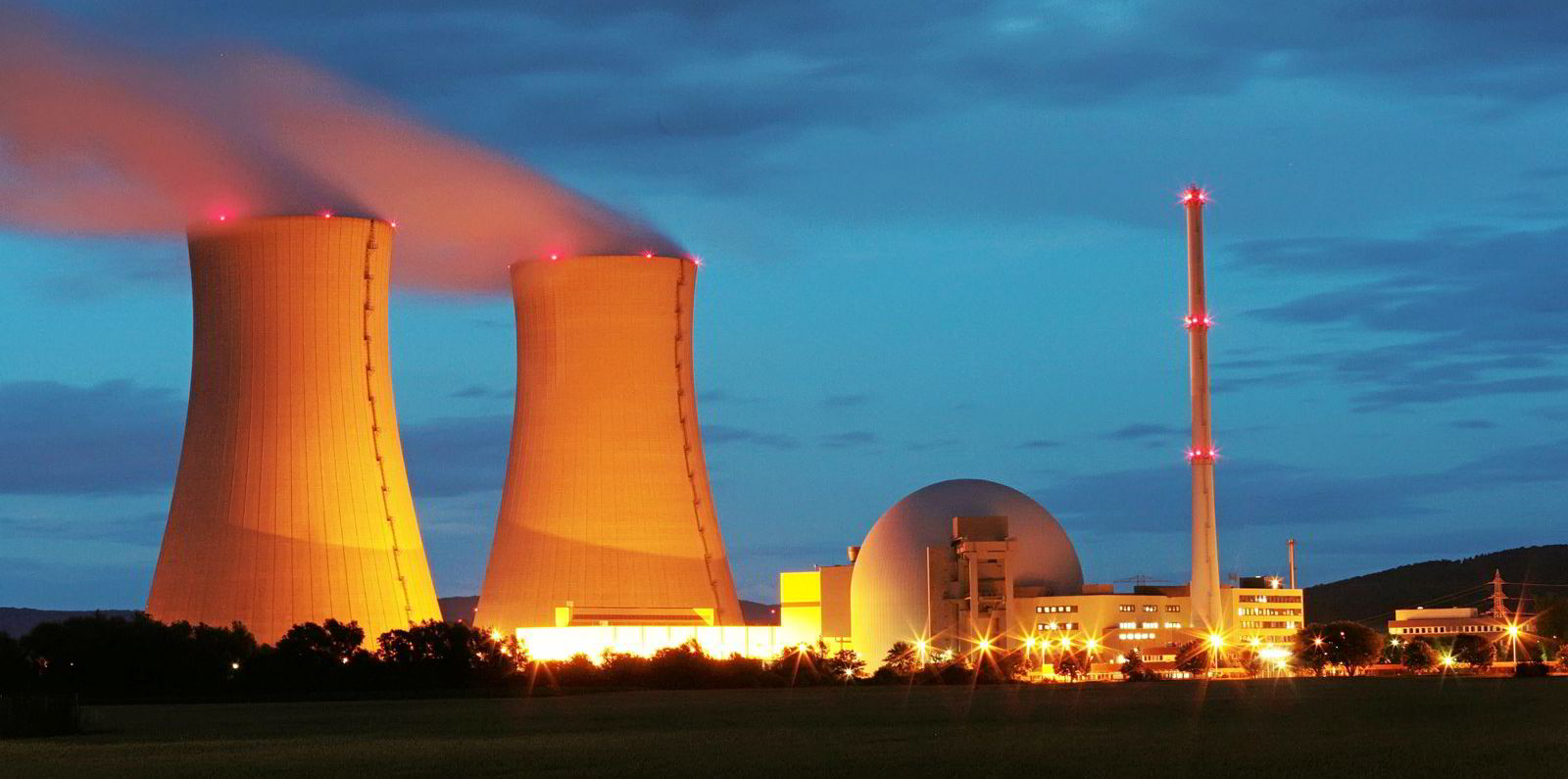
A view of the Grohnde nuclear power plant in Germany, which was decommissioned at the end of last year as part of the country's planned phase-out of atomic power.Photo: Getty
The Nuclear Hydrogen Initiative — a collaboration of more than 40 companies and organisations from around the world — is launched today to promote uranium-derived H2
Zero-carbon hydrogen produced from nuclear power is “a critical climate solution”, according to a new global coalition launched today that aims to advance the development of nuclear H2.
“Nuclear technologies have the potential to produce hydrogen in a clean, efficient manner, and at the potential scale required to drive decarbonisation in hard-to-abate energy sectors without the space constraints of other means of hydrogen production,” says the Nuclear Hydrogen Initiative (NHI).

EXCLUSIVE INTERVIEW | Would nuclear hydrogen cost the earth? Not if West learns lessons from Asia, says new global coalition
“This hydrogen generation pathway has several important benefits, including that it... [can provide] reliable clean energy at scale 24 hours a day, seven days a week, 365 days a year.”
Nuclear power’s ability to operate at full capacity for more than 90% of the year (ie, at a capacity factor of over 90%) gives it two advantages over variable renewables when it comes to clean hydrogen production.
The more hours per year that an electrolyser is running at full capacity, the lower the levelised cost of hydrogen. So an electrolyser operating around the clock — as opposed to only when the wind is blowing or the sun is shining — could potentially result in cheap H2 (presuming a low cost of electricity).
Also, due to the higher capacity factors, a 1GW nuclear plant could produce five times as much hydrogen as a 1GW solar plant over the same period of time.
For example, the International Energy Agency says that 520 million tonnes of clean hydrogen would be required annually by 2050 in a net-zero world. If this total were to be supplied by electrolysers, it would only require 3.3TW of nuclear power — compared to 16.5TW of solar, 13.5TW of onshore wind or 8.25TW of offshore wind, according to Recharge calculations (see panel below).
“Nuclear has several unique features, such as its high capacity factors and ability to produce not just electricity but also heat,” NHI spokesperson Elina Teplinsky tells Recharge. “Note that the biggest component of the cost of hydrogen is the cost of electricity. Nuclear electricity plus heat — which is currently unused — can be paired with high-temperature steam electrolysis; those [solid-oxide] electrolysers require less electricity and can produce hydrogen in a more efficient way, which would bring down costs.”
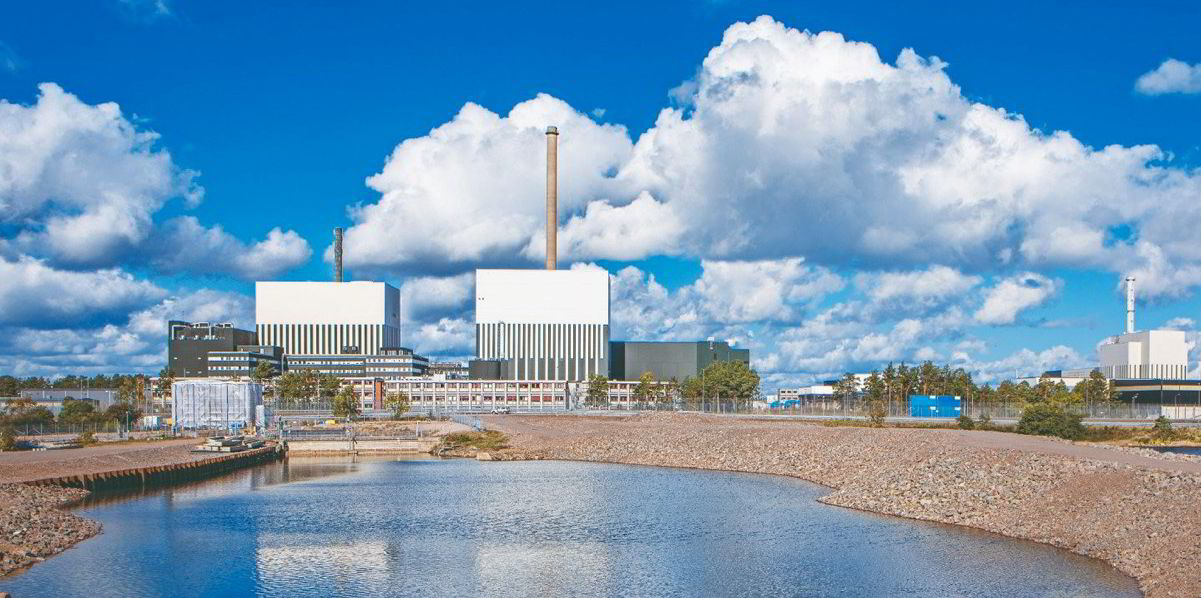
World first for nuclear-powered pink hydrogen as commercial deal signed in Sweden
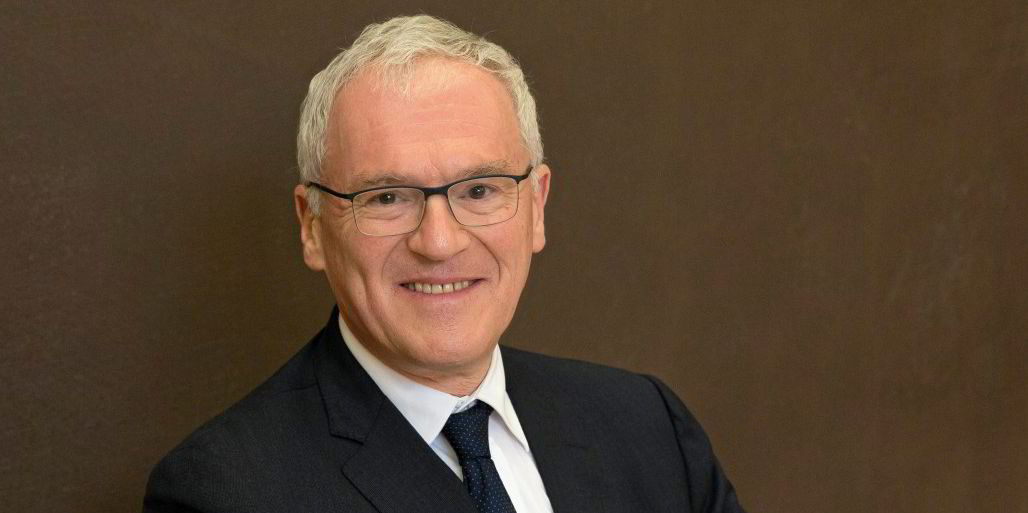
EDF to develop 3GW of green and pink hydrogen projects worldwide by 2030 — if governments help out
Nuclear hydrogen — also known as pink H2 — could also indirectly help atomic power stations to balance the grid, she adds. Existing nuclear power plants are difficult to ramp up and down, but if their output could be diverted to electrolysers at times when there is a lot of wind and solar power on the grid, it could prevent wind and solar curtailment and wholesale prices from falling to zero or below — ensuring greater profits for renewables developers.
Similarly, nuclear power operating in this way would effectively back up the grid at times when the wind isn’t blowing and the sun isn’t shining by diverting its output away from electrolysers and back to the transmission network.
“That is one of the models that several nuclear operators are pursuing today,” says Teplinsky. “This is one of the many ways that nuclear is complementary to renewables and the two technologies can work together.”
Cost of nuclear power
But isn’t nuclear energy incredibly expensive? After all, the UK’s under-construction Hinkley Point C power plant will receive a guaranteed £92.50 per MWh (at 2012 prices, but rising with inflation) for 35 years — making it almost three times more expensive than the latest offshore wind prices.
“Hinkley Point C is an outlier in terms of LCOE costs, rather than the norm,” says Teplinksy, a US-based lawyer focusing on hydrogen and nuclear power at the global law firm Pillsbury Winthrop Shaw Pittman. “Actual data from organizations such as the IEA shows that nuclear energy — despite often not benefitting from recognition of its zero-carbon value when it comes to government incentives – has [an] LCOE [levelised cost of energy] that is on average not only competitive with renewables, but is often lower.”
“We at the Nuclear Hydrogen Initiative believe that… nuclear hydrogen, once produced at scale, can be competitive with fossil-produced hydrogen.”
According to French financial advisers Lazard, which publishes a well-respected annual LCOE analysis report, the cost of new nuclear power is currently in the range of $131-204/MWh, while existing fully depreciated nuclear facilities have a marginal running cost of about $29/MWh.
By contrast, new utility-scale solar power costs $28-41/MWh, with new onshore wind at $26-50/MWh, and an average of $83/MWh for offshore wind.
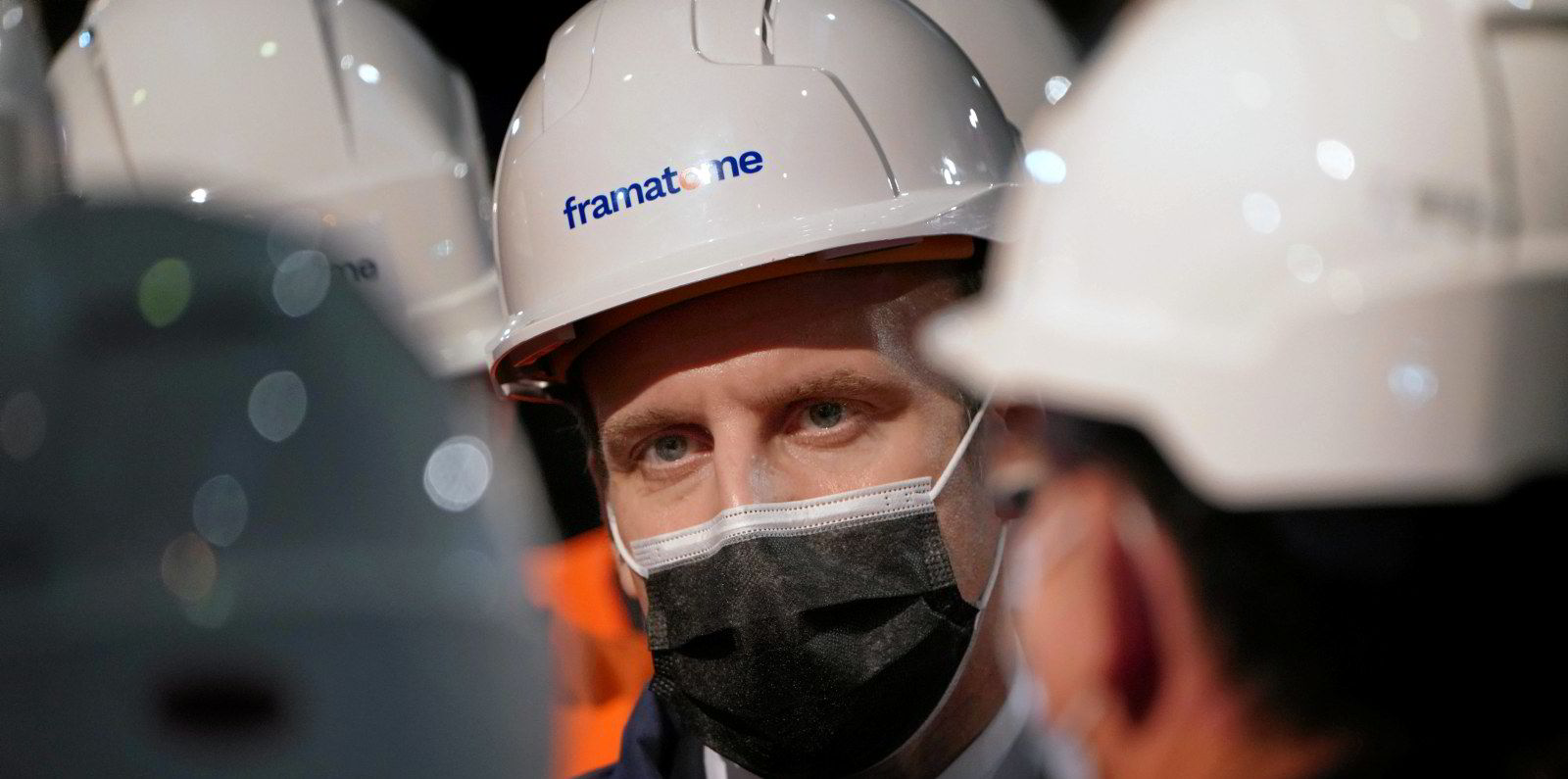
Macron hails pink hydrogen from nuclear as 'primary asset' for FranceRead more
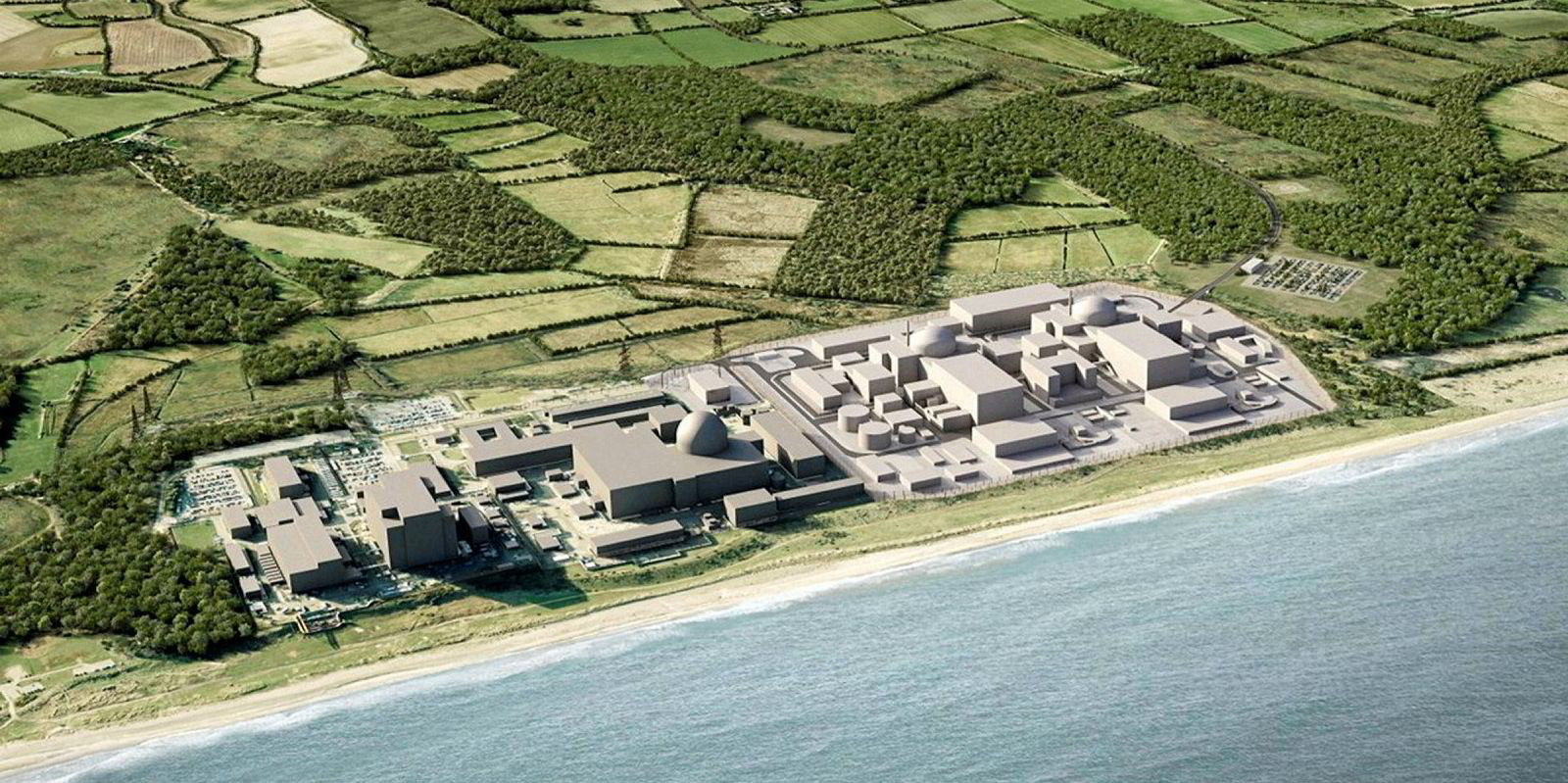
EDF’s plans to produce pink hydrogen at proposed 3.2GW nuclear plant are 'daft': Liebreich
Aims and partners
The NHI describes itself as a coalition of more than 40 global companies and organizations “working to advance nuclear hydrogen as a critical climate solution”.
“The initiative will engage policymakers, businesses, investors, and other key stakeholders to raise awareness of the important role nuclear hydrogen can play in delivering carbon-free, secure and affordable energy,” it said in its launch statement.
“NHI will facilitate the development of nuclear hydrogen demonstrations, engage the financial sector in nuclear hydrogen development, catalyze commercial partnerships and advocate for policies that support nuclear hydrogen deployment.”
The 47 companies and organisations that have so far signed up include electrolyser makers such as Cummins, Nel and Siemens, nuclear industry associations, the International Atomic Energy Agency, equipment suppliers, consultants, engineers, non-governmental organisations, and nuclear power operators including America's largest, Constellation Energy. (For the full list, click here.)
“We envision our nuclear plants becoming versatile clean energy centers that not only generate 24/7 carbon-free electricity for the grid, but also bring together clean hydrogen, renewables and other new and emerging technologies to power every corner of our economy,” said Colleen Wright, vice-president of corporate strategy at Constellation. “Climate experts agree we can’t fully solve the climate crisis without abundant sources of hydrogen, and nuclear energy remains the most efficient and economical way to produce it on the scale we need.”
The NHI describes itself as a coalition of more than 40 global companies and organizations “working to advance nuclear hydrogen as a critical climate solution”.
“The initiative will engage policymakers, businesses, investors, and other key stakeholders to raise awareness of the important role nuclear hydrogen can play in delivering carbon-free, secure and affordable energy,” it said in its launch statement.
“NHI will facilitate the development of nuclear hydrogen demonstrations, engage the financial sector in nuclear hydrogen development, catalyze commercial partnerships and advocate for policies that support nuclear hydrogen deployment.”
The 47 companies and organisations that have so far signed up include electrolyser makers such as Cummins, Nel and Siemens, nuclear industry associations, the International Atomic Energy Agency, equipment suppliers, consultants, engineers, non-governmental organisations, and nuclear power operators including America's largest, Constellation Energy. (For the full list, click here.)
“We envision our nuclear plants becoming versatile clean energy centers that not only generate 24/7 carbon-free electricity for the grid, but also bring together clean hydrogen, renewables and other new and emerging technologies to power every corner of our economy,” said Colleen Wright, vice-president of corporate strategy at Constellation. “Climate experts agree we can’t fully solve the climate crisis without abundant sources of hydrogen, and nuclear energy remains the most efficient and economical way to produce it on the scale we need.”
HOW RECHARGE CALCULATED THE HYDROGEN/POWER CAPACITY FIGURES ABOVE
Based on an electrolyser requiring 50kWh to produce one kilogram of hydrogen, 520 million tonnes of H2 would need 26,000TWh — or 2.97TW of power operating at 100% capacity constantly throughout the year.
Of course, not even a nuclear plant can do that, operating at the equivalent of full capacity for about 90% of the time, on average — a capacity factor (CF) of about 90%. By comparison, solar has a CF of about 18%, with onshore wind at around 22% and offshore wind at 36%.
So if all the 520 million tonnes of clean hydrogen required in 2050 were to be met by nuclear power, operating with a 90% capacity factor, it would require 3.3TW. Solar power, with a five times lower capacity factor would require five times more power (16.5TW).
No comments:
Post a Comment